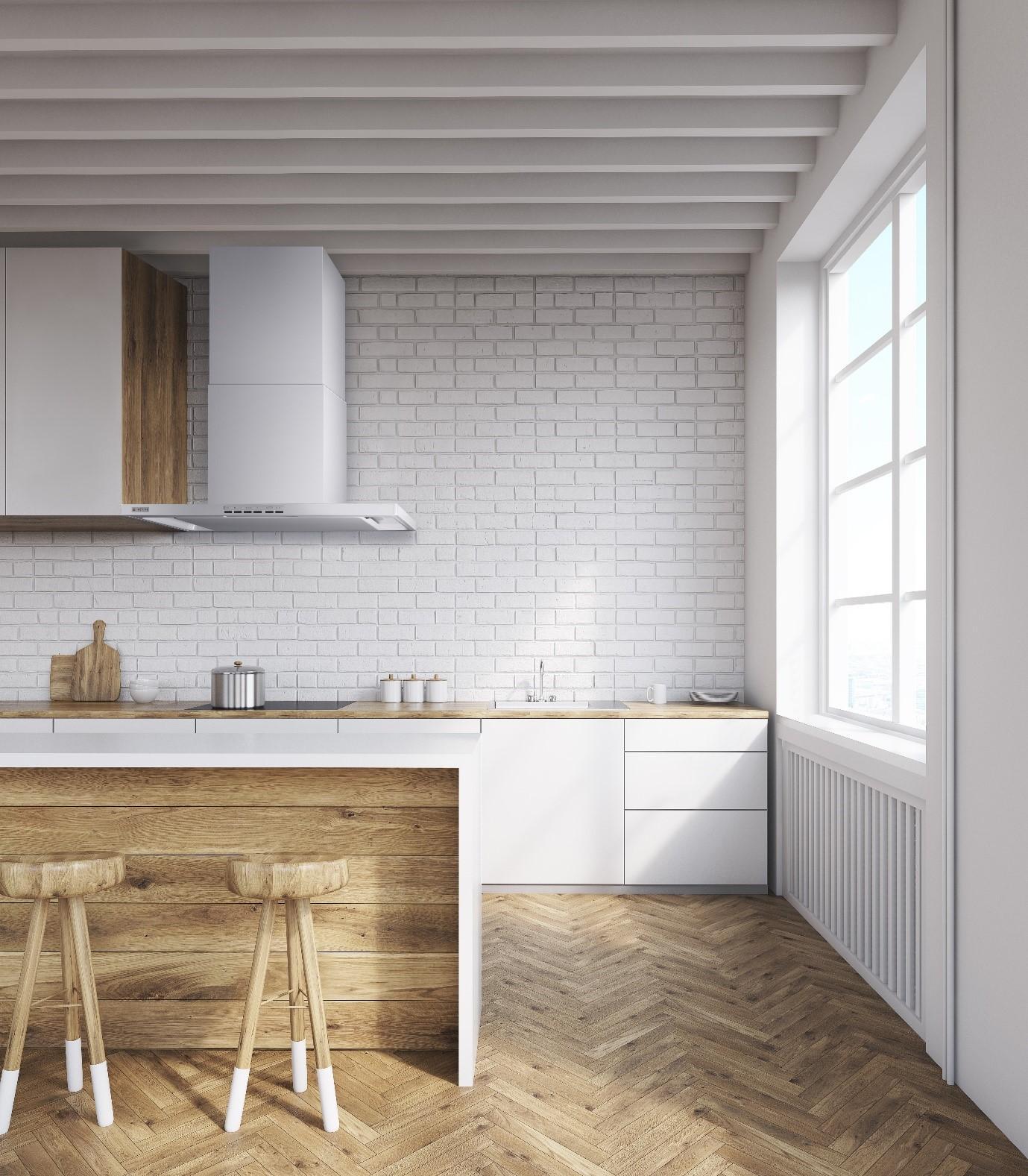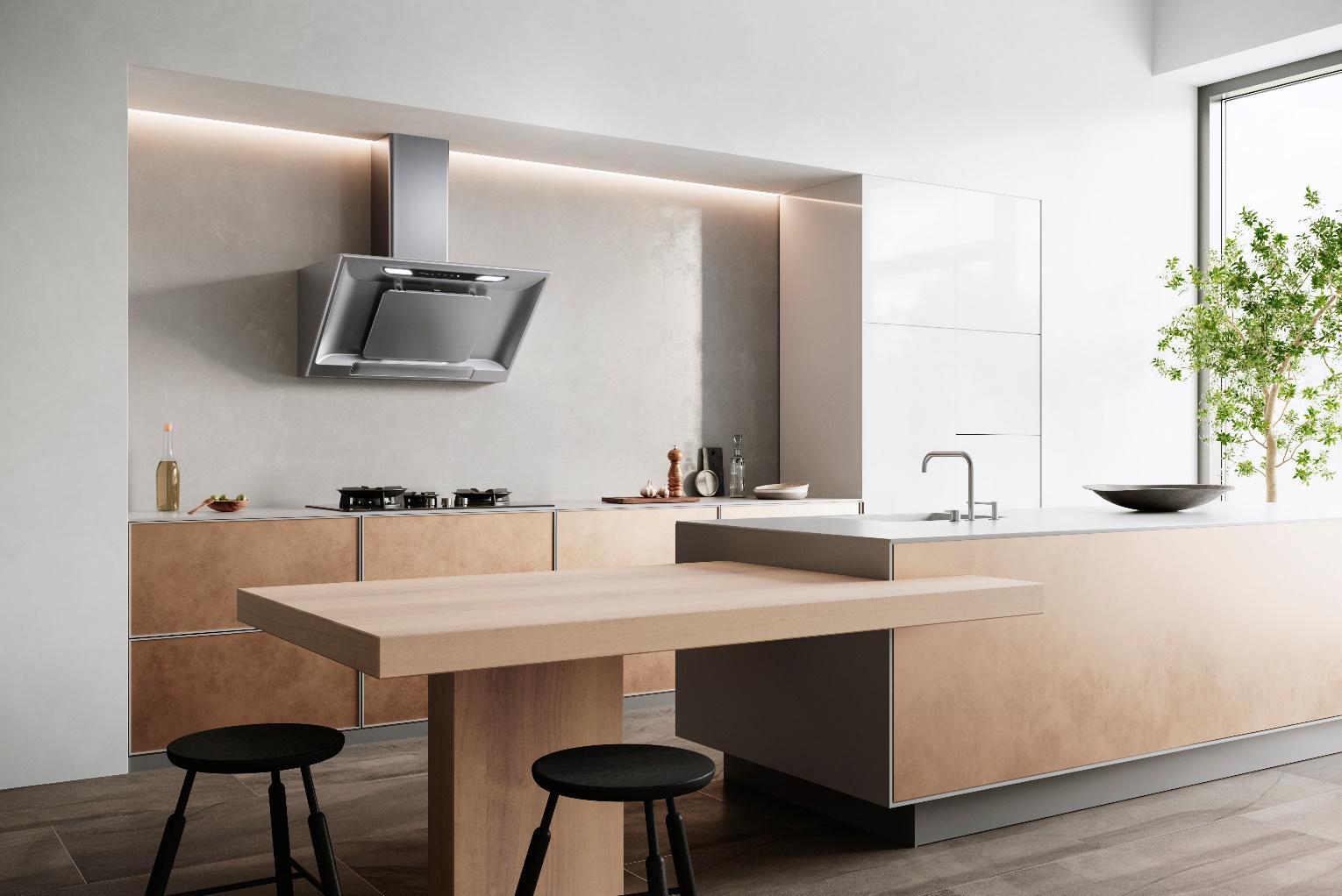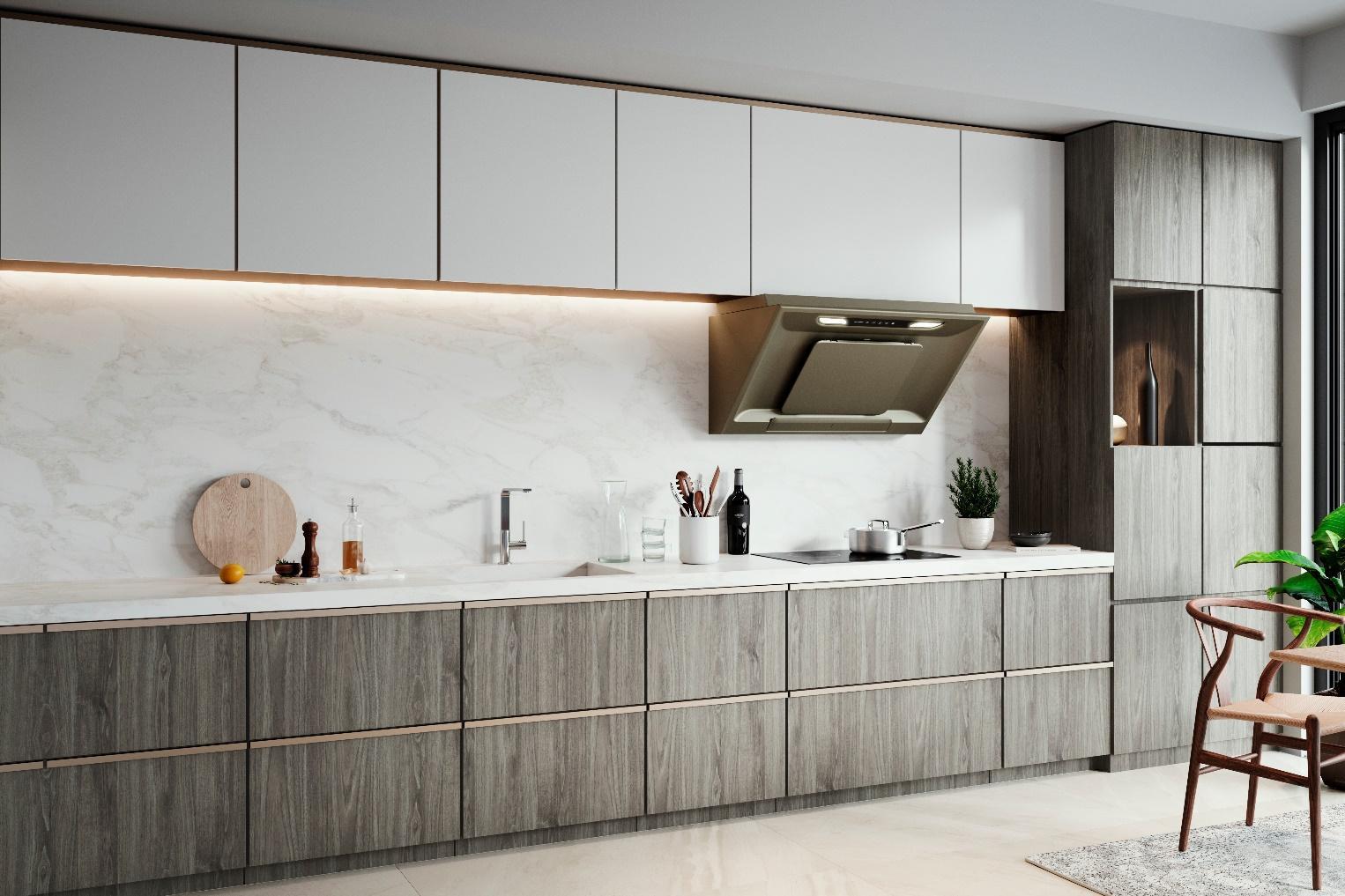
Featured product: FUJIOH Cooker Hood FR-CL1890
When it comes to creating the perfect cooking kitchen, there is no denying that incorporating the right appliances is a must. And of the various kitchen appliances to consider, the cooker hood makes it to the top of the list of all the must-haves. But of course, choosing the best cooker hood for your kitchen means considering all the different factors, including the type of cooker hood to have installed.
If you are looking for a new cooker hood, you might find yourself wondering what is the difference between ventilating and recycling cooker hoods. Depending on your house type and kitchen setup, there are many factors to consider before making your final decision. Therefore, you should take the time to consider the pros and cons of both entilating and recycling cooker hoods. This is why this article focuses on things you need to know about cooker hoods along with the differences between the ventilating and recycling types.
A cooker hood is an electrical kitchen appliance with a ventilation system installed above the cooktop to remove cooking grease, fumes, heat, and odours from the kitchen.
It comes with a mechanical fan that draws off the smoke from cooking. From there it either ventilates the smoke outside the kitchen through an exhaust system or recycles them back into the room after filtration.
This helps keep the particles from collecting on the walls, ceilings, and other surfaces while simultaneously cutting down on the oil grease build-up that can accumulate in your kitchen. This way, you can keep the kitchen clean and create a comfortable cooking environment.
Cooker hoods are classified into two types: ventilating and recycling. This classification is based on how the kitchen hood processes the air that is being absorbed while you’re cooking. Ventilating cooker hoods (ducted) are connected to a duct with pipes that carry the cooking fumes away from your kitchen and into the outdoors.
Recycling cooker hoods (ductless), on the other hand, are installed without any ducting that is used to process the air. Instead, it makes use of a strong filtration system which releases clean air back into the kitchen.

Featured product: FUJIOH Cooker Hood FR-SC2090 (Ventilating Type)
Ventilating cooker hoods have been around since the early 20th century. They are also widely used in commercial kitchens or homes with a large cooktop that generates a significant amount of smoke, fumes, or oil grease from cooking. Plus, they are more powerful than the recycling cooker hood, as they filter and ventilate the air outside the kitchen through a duct. However, the efficiency and noise production will depend on the brand, size, model, and how well you take care of your ventilating cooker hood.
One of the drawbacks of ventilating cooker hoods is that they require lots of space to install, especially since it requires an exhaust hose or ductwork. This can make the installation process come with a high initial investment cost and not be the ideal choice for some homeowners, like those living in a high-rise building.

Featured product: FUJIOH Cooker Hood FR-SC2090 (Recycling Type)
Unlike ventilating cooker hoods, recycling cooker hoods offer a lot of convenience and flexibility. They don’t require any ducting on the wall or ceiling, so you can install them anywhere in your kitchen. Due to the absence of such additional components and installation process, the installation of recycling cooker hoods is also less complex, and as a result, less expensive.
However, a recycling cooker hood is not without its drawbacks. Since they mainly filter and recirculate the air in the kitchen, regular cleaning of your cooker hood or replacement of the filter is required to maintain the air quality in your space. The noise production may also be a bit higher than the ventilating cooker hood.
Hence, all of the FUJIOH made-in-Japan cooker hoods are designed with a unique coating technology filter to ensure the cleaning process is simple and that your kitchen is kept clean and comfortable. FUJIOH’s Oil Smasher spinning disk filter as seen in the FR-CL1890 and Aqua Slit Filter included in other FUJIOH cooker hoods make it easy for users to maintain the cooker hood by washing with only water.
This is a common question that many people ask before making their purchase. Regardless, it all depends on your house type, cooking style, the size of your kitchen, and ultimately, your budget.
In Singapore, recycling cooker hoods can be used in all types of houses while ventilating cooker hoods can only be used in landed properties. There is a good reason why ventilating cooker hoods are not allowed in HDB flats and most condominiums as the buildings are very near one another and nobody wants the oil fumes to be blowing into their house.
If you’re an avid cook, a typical homeowner, or you regularly cook heavy meals at home, the ventilating cooker hood is your best option. This is because you need a powerful ventilation system to remove all the smoke and fumes produced while cooking. However, do remember that ducted hoods like these are not allowed in HDB flats.
However, if you tend to cook simple meals and/or live in an apartment, the recycling cooker hood is your best option because you do not require extra space for the ductwork. After all, most building management won’t want you to cut into the walls and make structural changes to the building.
FUJIOH cooker hoods come with unique coating technologies which is a great Japanese innovation that makes the cleaning process of cooker hoods a lot easier. If you require more information on our cooker hoods, feel free to get in touch with us at FUJIOH Singapore or email us at fit@fujioh.com.sg